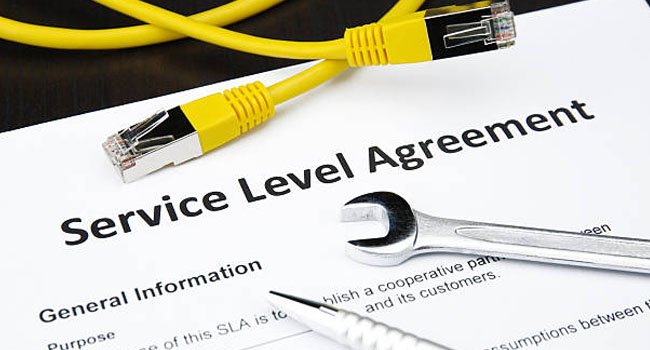7 Best Practices in Managing Your IT Support Ticket System

An IT support ticket system is a key backbone of IT services. It determines the flow of customer service, from when your customer reaches out with their concern or request until you address or solve it. Without effective ticket handling processes, you get unnecessarily long downtimes that cut down on productivity and decrease client satisfaction. The more issues left unresolved, the more it can cost your business.
It’s well worth noting that clients may also refer to internal customers—employees who have issues with their devices or IT-related tasks. Resolving their concerns allows them to get back to work sooner and do their core functions. It is thus crucial to realise that reliable IT support services can improve efficiency in the day-to-day operations, give you an edge over competitors, and propel your company to greater heights.
Elevating your IT support services
Here are 7 best practices that can help ensure solid IT support in London or wherever your enterprise is based in:
-
Establish how IT helpdesk staff should prioritise tickets

Setting up an appropriate triage for handling tickets can effectively assist in tackling a heavy influx of requests and stopping backlog. To optimise ticket priority in an organised manner, factor the breadth and financial impact of a specific issue when categorising. This way, you guarantee that the most pressing (and potentially most expensive) problems are allocated the most effort immediately. Bear in mind however, that the priority system needs to be updated frequently in line with changes in services, products, and business objectives.
-
Set, track, and monitor ticket status

After forming the basis for ticket prioritization, you need to see these tickets through efficiently. This means classifying the tickets consistently in accordance with 4 primary status levels: new/open, in-progress, pending/on-hold, and closed/solved. These levels are simple, as well as easy to recognise and act on, thereby allowing for streamlined onboarding for newer, less experienced staff. By dedicating even a minimal amount of time to setting ticket statuses, you avoid redundant resolving and limit duplicate tickets.
-
Set alerts and automate workflows

Regardless of all the features that need to be configured initially, an automated IT support ticketing is a must-have. Plus, once you have it, the automated system simplifies the process and makes it more efficient and accurate than a manual counterpart. You don’t have to implement costly, state-of-the-art AI to accelerate your workflow. What’s needed at least are simple automation rules, alerts for idle tickets, and the ability to tag problems that require more technical solutions, among others. Leaving the work to computers leaves less for human error and minimises the likelihood of severe issues.
-
Classify customers and prioritise tickets based on that classification

It’s a smart move for the IT helpdesk team to prioritise customers who are paying more for premium services and features. While some may worry that this approach alienates users who would rather not spend more, offering added value to those who are willing to pay for priority service just makes sense. This doesn’t mean you will be ignoring customers with free plans or cheaper packages; rather, you are ensuring that you retain key customers to maximise profits and Return on Investment (ROI).
-
Incorporate SLAs

Having Service Level Agreements (SLAs) helps set realistic expectations for both the support technicians and the customers. SLAs generally include important details on the resolution of tickets such as minimum or maximum wait times for initial response, modes of communication, or time frames on open tickets. By clearly defining the specific terms that your company’s IT support services go by, customers can hold you accountable, while keeping support staff motivated.
-
Ensure that support team members aren't overloaded

Not only should a good ticketing system improve service to customers, but it should also provide a good working environment for the technical team. With staff having to deal with various issues practically 24/7 (as is the usual case for most), IT support London for UK companies can be stressful. Your system should therefore be designed to streamline workflows and eliminate redundancies that may exacerbate your staff’s functions and lead to a possible backlog. Persistent backlogs can spiral into additional stress, lowered morale, and a decline in productivity.
-
Build a knowledge base

To further cut down on unnecessary tickets and enhance efficiency for all parties, establish a knowledge base that includes useful, sought-after content such as basic troubleshooting or Frequently Asked Questions (FAQs). In addition, encourage users and support staff to check there first before elevating the issue to the helpdesk or engineers. This facilitates self-service that may be more efficient for both internal and external clients seeking immediate fixes. Having this type of information resource saves time and effort, and provides additional knowledge to customers.
Meet and exceed customers’ needs

Ultimately, the goal of every IT support unit is to offer a speedy and successful resolution to customers’ technical issues. With an effective IT support ticket system, you will be able to achieve this plus some added benefits: a productive tech team with streamlined workload, and the satisfaction that your organization is meeting and exceeding your customers’ needs.
Consult with your managed services provider today and see how you can improve your IT support London services and boost your business.
Related Posts
By accepting you will be accessing a service provided by a third-party external to https://www.htl.london/